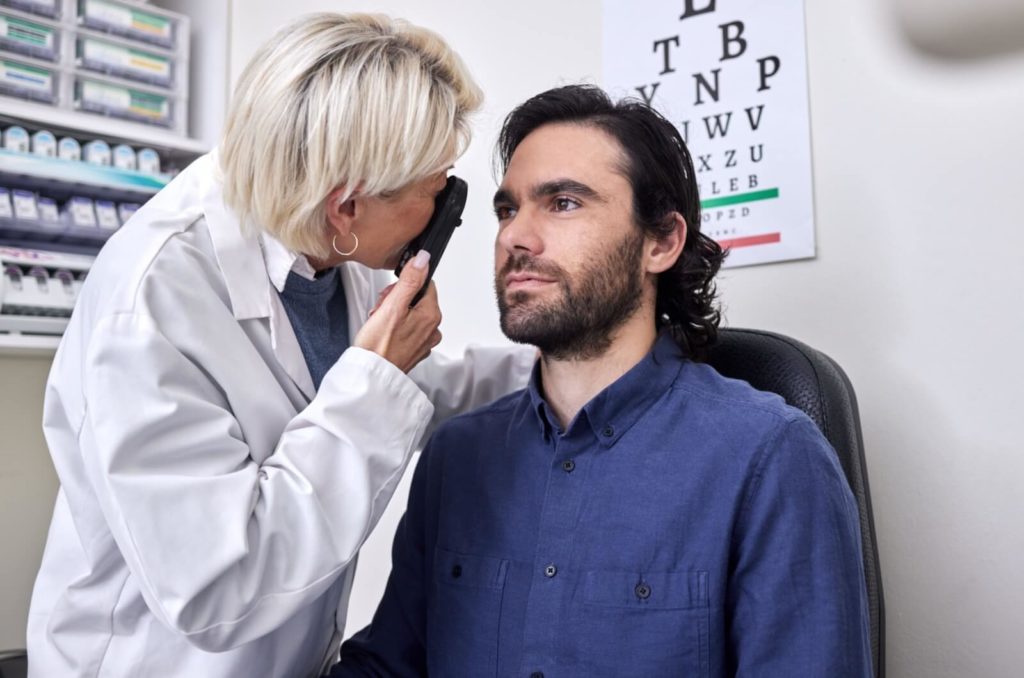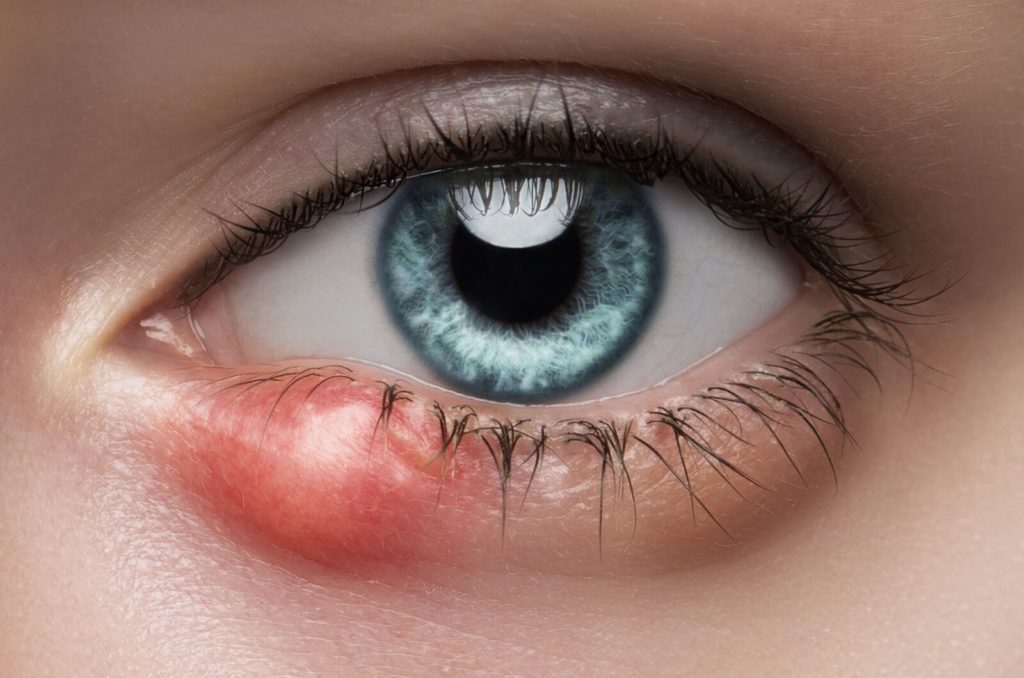If you’re dealing with a small, red, uncomfortable bump on your eyelid, it could be a chalazion. This common condition is more prevalent than most people think, and can cause a host of different vision problems if you don’t try to address the problem. But will it go away on its own, or do you need help from your optometrist?
Most of the time, a chalazion will recede on its own. Your hygiene practices play an important role here; keeping the area clean and bacteria-free significantly increases the odds that your chalazion will go away. However, sometimes they don’t go away on their own, so visit your optometrist if you notice any significant discomfort or persistent symptoms.
What Is a Chalazion?
A chalazion usually begins as a small, red, painless lump on the eyelid. They develop when an oil gland becomes blocked or impaired, trapping bacteria inside, where they begin to multiply. This process can then lead to inflammation of the surrounding tissue and swelling in the surrounding area.
This creates a blockage, so oils can no longer flow freely from the gland, and instead solidify inside the gland, creating a visible lump. A chalazion can also develop due to a stye or local infection, and can even develop due to skin conditions and underlying medical conditions. Almost any condition that affects the eyelids can lead to a chalazion developing.
How to Recognize a Chalazion
Usually, you can recognize a chalazion by a small bump located near the center of your eyelids. They typically swell and cause redness, alongside:
- Inflammation around the bump
- Sensitivity to light
- Blurred vision—especially if the chalazion presses against the eye
- Increased tearing or discharge from the eye
Though these symptoms are often minor, they can be a significant inconvenience. However, it’s important to remember that a chalazion can easily be mistaken for a stye, where an infection causes similar symptoms. Don’t leave a chalazion unaddressed; if your symptoms are being caused by an infection, you may experience long-term effects on your vision.
If you notice significant discomfort or pain at any point, visit your optometrist.
Are Chalazions Permanent?
Chalazions are not a permanent condition. They should resolve on their own without the need for any advanced treatment; this usually only takes up to a week or so.
However, this timeline does depend on your individual habits and lifestyle. If you’re dealing with a chalazion, try to:
- Use warm compresses on the affected eyelid for 10-15 minutes at a time throughout the day. This helps open the affected gland and promote the drainage of any blocked oils.
- Maintain proper eyelid hygiene throughout the day. You can use a gentle eyelid cleanser or even baby shampoo diluted with water to remove any bacterial buildup.
- Gently massage your eyelids several times a day. This helps break up oil blockages and increases blood flow to the area, which promotes healing.
- Avoid using eye makeup until your symptoms recede, and dispose of any old makeup—it can harbor bacteria and block the oil glands before they can drain.
These steps are simple, but they can make a noticeable difference. You should never try to pop a chalazion on your own—this can cause further damage to the area and puts you at risk of permanently damaging your eyesight.

Can Your Optometrist Treat a Chalazion?
If your chalazion becomes too uncomfortable or the symptoms start interfering with your day-to-day life, your optometrist may be able to help you find relief. Typically, this can be done through:
- Medication, including eye drops and ointments if they’re worried about your risk of infection.
- Steroid injections, which can reduce inflammation and promote the body’s natural healing process.
- Minor surgical removal, where a small incision is made under local anesthetic to drain the clogged gland.
Remember—your optometrist is an eye care professional, and they can help you keep your eyes healthy. Whether your symptoms are caused by a chalazion or another eye condition, they can help you make a plan to prevent your symptoms in the future.
Tips for Preventing Chalazion
Like many other eye conditions, preventing a chalazion is often more ideal than trying to treat it. To prevent this condition from repeating, it’s crucial to practice proper eye hygiene. Make sure to:
- Clean your eyelids regularly with a gentle cleanser to remove dirt and oil buildup
- Avoid touching your eyes with unwashed hands
- Avoid rubbing your eyes at all times
- Replace your makeup products regularly to avoid bacterial contamination
- Never sleep with makeup on
- Maintain a healthy diet to promote overall eye health
If you ever experience something unusual, make a point to visit your optometrist for a comprehensive eye exam. They can give you personalized advice that suits your lifestyle and help you lower the risk of developing a chalazion in the future.
Keeping Your Vision Clear
A chalazion can be extremely uncomfortable, but there’s no need to suffer in silence. If you have a persistent or bothersome chalazion, book an appointment with us at Total Vision Tierrasanta. We’re here to keep your vision clear and your eyes healthy, so contact our team today.


